Frogs are amphibians that are known for their jumping abilities, croaking sounds, bulging eyes and slimy skin. They live all over the world and are among the most diverse animals in the world, with more than 6,000 species.
An adult frog has a stout body, protruding eyes, anteriorly-attached tongue, limbs folded underneath, and no tail (except in tailed frogs). Frogs have glandular skin, with secretions ranging from distasteful to toxic. Their skin varies in colour from well-camouflaged dappled brown, grey and green to vivid patterns of bright red or yellow and black to show toxicity and ward off predators. Adult frogs live in fresh water and on dry land; some species are adapted for living underground or in trees. Toad is a common name of certain frogs, specially of the family Bufonidae, that are characterized by dry, lathery skin, short legs, and large bumps covering the parotoid glands (external skin gland).
Frogs are an important food source for predators and part of the food web dynamics of many of the world’s ecosystems. The skin is semi-permeable, making them susceptible to dehydration, so they either live in moist places or have special adaptations to deal with dry habitats. Frogs produce a wide range of vocalizations, particularly in their breeding season, and exhibit many different kinds of complex behaviours to attract mates, to fend off predators and to generally survive.
Frogs are valued as food by humans and also have many cultural roles in literature, symbolism and religion. They are also seen as environmental bellwethers, with declines in frog populations often viewed as early warning signs of environmental damage.
They do not cause any degradation to agricultural crops, fruits and vegetation; on the contrary they prey on the pests of crops. Losses of habitat, climate change, road mortality, over harvesting for food trades etc. are the main threats which affect amphibians’ populations. Many species in recent years have declined so much that active consideration for protection has become very necessary.
| Sl. no | Common name | Scientific name | Local Name | IUCN status | Habitat and Ecology | Images |
|---|---|---|---|---|---|---|
| 1 | Asian Common Toad, Asian Toad | Bufo melanostictus | Hang-oi bora-bi | Least concern | Disturbed lowland habitats, mostly found under ground cover | 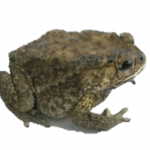 |
| 2 | Indian hylid frog, green leave frog, China tree frog, | Hyla annectens | Hangoi tangsang | Least concern | Found in grasslands, and agricultural land close to forests. | 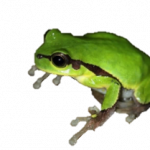 |
| 3 | Indian skipping frog | Euphlyctis cyanophtyctis | Hangoi | Least concern | Found in marshes, pools and various other wetlands. | 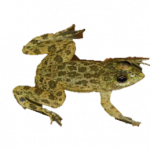 |
| 4 | Indian Green Frog | Euphlyctis hexadactylus | Hangoi | Least concern | Found in most types of water bodies where it is associated with aquatic vegetation. | 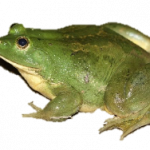 |
| 5 | Long legged cricket frog, Bombay wart frog | Fejervarya syhadrensis | Narak hangoi | Least concern | Occurs in grassland, forest and agricultural land | 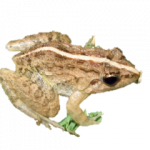 |
| 6 | Jerdon's Bullfrog, South Indian bullfrog | Hoplobatrachus crassus | Moreh hangoi | Least concern | Seasonally flooded dry grasslands, open plains and arid areas. | 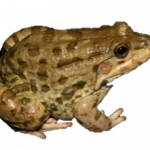 |
| 7 | Asian painted frog, rice frog, bubble frog | Kaloula pulchra | Hangoi | Least concern | Found in wetland, riverbank, and forest edge habitats, as well as agricultural and residential areas. | 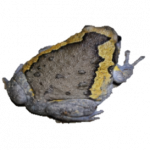 |
| 8 | Indian Bullfrog | Hoplobatrachus tigerinus | Moreh hangoi | Least concern | Inhabiting holes and bushes near permanent water courses and pools | 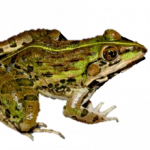 |
| 9 | Spadefoot Toad, white lipped Horned Frog | Xenophrys major | Keng-keng Pui | Least concern | Evergreen forests, in monsoon and perennial rain climates | 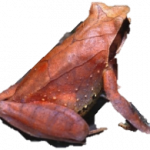 |
| 10 | Concave-crowned Horned Toad, brown horned frog. | Xenophrys parva | Keng-keng pui | Least concern | Evergreen broadleaf forest alongside streams. | 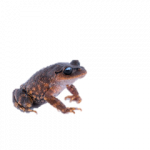 |
| 11 | Ornamented pygmy frog | Mcrohyla ornata | Hangoi | Least concern | It occupies a number of habitat types including lowland scrub forest, grassland, agricultural land, pastureland and urban areas. | 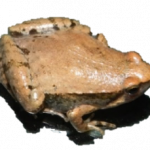 |
| 12 | Bhamo Frog | Rana humeralis | Hangoi | Least concern | Riparian forest habitats. | 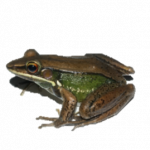 |
| 13 | Common Green Frog, Green Paddy Frog, Leaf Frog. | Rana erythraea | Hangoi | Least concern | Vegetated flood plain ponds and is also frequently associated with rice fields. | 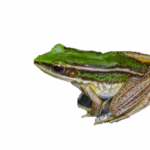 |
| 14 | Common Tree Frog, Four-lined Tree Frog, White- lipped Tree Frog | Polypedates teraiensis | Piarang, Pako-pa, Lang-mei rel, Phualpi, etc. | Vulnerable | Adaptable opportunist and commensal, occurring from beach vegetation through all manner of human habitats (such as agricultural areas, ditches, artificial ponds etc.) | 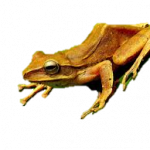 |



